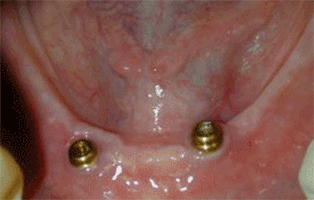When the majority of teeth are affected by advanced periodontal disease, decay, or other problems, extracting them may be the only option.
Dentures
Removing diseased teeth is often the best way to eliminate infection and restore the gums and the supporting bone to a healthy condition.
The Procedure – Before the teeth are extracted, impressions of the upper and lower jaws are taken. Precise models will be made from these impressions by the dental lab. Your dentures will be created using these models.
Dr. Foutz will work closely with you to select the appropriate shape and color of the teeth to be crafted into your dentures.
Once the lab has completed the dentures, all of the teeth will be extracted, and the new dentures will be put in place.
Initially the dentures will feel tight because the gums are swollen and sore (a result of extracting the teeth). As swelling reduces over the next few days, and as the underlying bone heals over the next few months, the denture may begin to loosen. During this period, Dr. Foutz will periodically reline your dentures to correct the fit.
What are “snap in” dentures?
More often these days, patients will choose to have, at least, the lower denture fashioned to snap into place over 2 dental implant posts. The denture will actually “click” into position (see image at top of page). This option helps to stabilize and retain the denture in the mouth. In addition, this type of denture can be removed for cleaning.
If disease or injury are not too great, or if cost is not the most significant factor, there are perhaps better alternatives to dentures. These include crowns, bridges, implants, and full mouth rehabilitation. With all the new treatment options available at Dr. Barton H. Foutz, DDS, the selection of standard dentures is becoming less common










